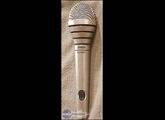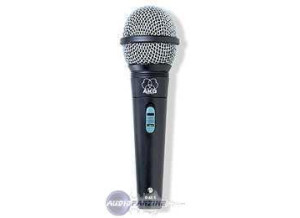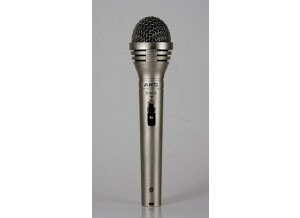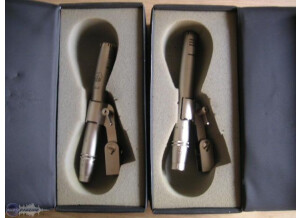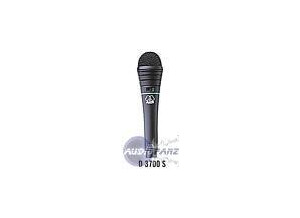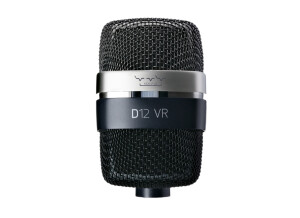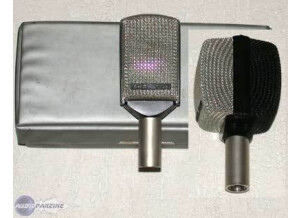Tech. sheet
- Manufacturer: AKG
- Model: D 330 BT
- Category: Dynamic Microphones
- Package weight:1.2 kg
- Other names:d 330 bt, d330bt, d330 bt, d 330bt, lot de micro, lotdemicro, micros
We have no technical specifications for this product
but your help will be much welcomed
»
User reviews
Published on 06/18/03 at 03:50
It's a fairly universal dynamic mic with a couple of years on its back, I don't think you can find it in stores anymore.
OVERALL OPINION
It has 2 built-in filters, low-pass and high-pass.
OVERALL OPINION
It has 2 built-in filters, low-pass and high-pass.
00
»
Published on 05/13/06 at 08:40
Cardioid dynamic microphone with 3-way low-cut and high-cut filters. Conceived for vocals and live, but can also be used to record a guitar amp.
OVERALL OPINION
I found it a couple of days ago at a secondhand shop ($15, these people sometimes sell crap really expensive, and top gear really cheap, due to their ignorance). Compared to my SM 58, this one is (largely) better. I prefer it to the beta 58, too. It was a really nice surprise, especially since I didn't know it.
OVERALL OPINION
I found it a couple of days ago at a secondhand shop ($15, these people sometimes sell crap really expensive, and top gear really cheap, due to their ignorance). Compared to my SM 58, this one is (largely) better. I prefer it to the beta 58, too. It was a really nice surprise, especially since I didn't know it.
00
»
Published on 05/08/07 at 07:44
Hypercardioid dynamic mic
Built-in 100 Hz pad (up to -25 db), built-in boost at 4 kHz (up to 4 db)
Sensitivity: 1.2 mV/Pa
Range: 50 Hz - 20 kHz
SPL for 1% THD: 128 dB
OVERALL OPINION
I've used it regularly in concert and rehearsals for more than 15 years, as a musician or sound engineer (non-professional in both cases). So it has endured several hundred gigs.
A bit weak in terms of sensitivity compared to other mics in a somewhat "higher" category (like the Beta 58 or N/D767A) and even compared to more recent mics in a "lower" category (E845, D880, etc.), but don't forget it's 20-year old technology.
Note: It isn't very prone to feedback, which might seem quite surprising.
It's truly...…
Built-in 100 Hz pad (up to -25 db), built-in boost at 4 kHz (up to 4 db)
Sensitivity: 1.2 mV/Pa
Range: 50 Hz - 20 kHz
SPL for 1% THD: 128 dB
OVERALL OPINION
I've used it regularly in concert and rehearsals for more than 15 years, as a musician or sound engineer (non-professional in both cases). So it has endured several hundred gigs.
A bit weak in terms of sensitivity compared to other mics in a somewhat "higher" category (like the Beta 58 or N/D767A) and even compared to more recent mics in a "lower" category (E845, D880, etc.), but don't forget it's 20-year old technology.
Note: It isn't very prone to feedback, which might seem quite surprising.
It's truly...…
Read more
Hypercardioid dynamic mic
Built-in 100 Hz pad (up to -25 db), built-in boost at 4 kHz (up to 4 db)
Sensitivity: 1.2 mV/Pa
Range: 50 Hz - 20 kHz
SPL for 1% THD: 128 dB
OVERALL OPINION
I've used it regularly in concert and rehearsals for more than 15 years, as a musician or sound engineer (non-professional in both cases). So it has endured several hundred gigs.
A bit weak in terms of sensitivity compared to other mics in a somewhat "higher" category (like the Beta 58 or N/D767A) and even compared to more recent mics in a "lower" category (E845, D880, etc.), but don't forget it's 20-year old technology.
Note: It isn't very prone to feedback, which might seem quite surprising.
It's truly sturdy (it's impressive, it's the only mic whose windscreen I haven't had to change), with an impeccable finish.
Rather clean and precise sound, "flat" reproduction.
I have four, which I basically use to record the snare and toms live, in case the drummer hits like a madman or is clumsy (you need to take care of your most expensive and fragile mics).
It is a bit less rich and subtle than the M201N C for such applications, but much more effective than a cardioid mic like the SM57 (more immune to surrounding sounds, with a wider and more faithful reproduction)
If need be, it can also be used for hi-hats or the ride.
It's technically interesting for vocals (it handles plosives very well, doesn't have a significant proximity effect, as far as I recall, even without low-cut). There was a time when I used it for backing rather than lead vocals, due to its weak sensitivity and its small dip in the mids.
I have good memories of it on guitar amps.
No bad memories on acoustic strings (although it's been quite some time). I never used it for wind instruments (brass nor wood).
In my opinion, it is better than the SM58 cardioid in all cases and even the new AKG supercardiod, the D880 (very somber and not very precise, in my opinion).
Built-in 100 Hz pad (up to -25 db), built-in boost at 4 kHz (up to 4 db)
Sensitivity: 1.2 mV/Pa
Range: 50 Hz - 20 kHz
SPL for 1% THD: 128 dB
OVERALL OPINION
I've used it regularly in concert and rehearsals for more than 15 years, as a musician or sound engineer (non-professional in both cases). So it has endured several hundred gigs.
A bit weak in terms of sensitivity compared to other mics in a somewhat "higher" category (like the Beta 58 or N/D767A) and even compared to more recent mics in a "lower" category (E845, D880, etc.), but don't forget it's 20-year old technology.
Note: It isn't very prone to feedback, which might seem quite surprising.
It's truly sturdy (it's impressive, it's the only mic whose windscreen I haven't had to change), with an impeccable finish.
Rather clean and precise sound, "flat" reproduction.
I have four, which I basically use to record the snare and toms live, in case the drummer hits like a madman or is clumsy (you need to take care of your most expensive and fragile mics).
It is a bit less rich and subtle than the M201N C for such applications, but much more effective than a cardioid mic like the SM57 (more immune to surrounding sounds, with a wider and more faithful reproduction)
If need be, it can also be used for hi-hats or the ride.
It's technically interesting for vocals (it handles plosives very well, doesn't have a significant proximity effect, as far as I recall, even without low-cut). There was a time when I used it for backing rather than lead vocals, due to its weak sensitivity and its small dip in the mids.
I have good memories of it on guitar amps.
No bad memories on acoustic strings (although it's been quite some time). I never used it for wind instruments (brass nor wood).
In my opinion, it is better than the SM58 cardioid in all cases and even the new AKG supercardiod, the D880 (very somber and not very precise, in my opinion).
See less
00
»










